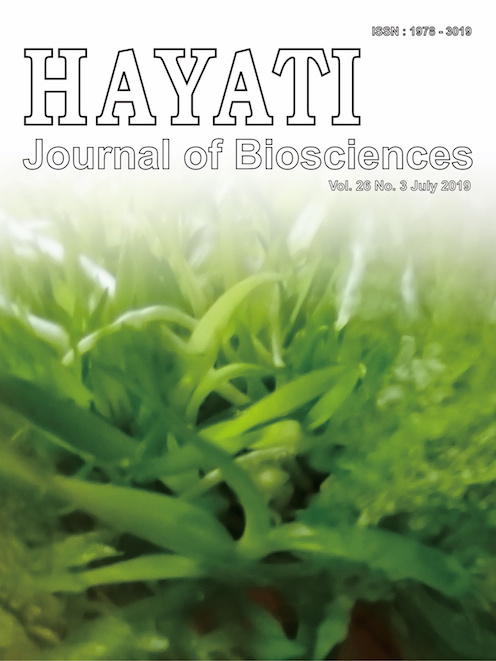Phytochemical, Antibacterial, and Antioxidant Activities of Anthurium Hookerii leaves Extracts
Abstract
Many plants of the family of Araceae possess significant benefit as medicinal plants. Anthurium hookerii is herbaceous genus of the family of Araceae. A. hookerii leaves were extracted with five dissimilarity solvents (methanolic, water, ethyl acetate, n-hexane, and dichloromethane). The extracts were evaluated for their phytochemical, total phenolic contents, and antibacterial potential. The presences of tannins and saponins were found in all crude extracts. The steroid was only found in dichloromethane extract, whereas flavonoid was obtained in methanol and water extracts. Besides; methanol, ethyl acetate, water, and n-hexane extracts showed triterpenoid contents. Alkaloid presences in ethyl acetate, methanolic, dichloromethane, and water extracts. The total phenol content was examined by Follin-Ciocalteu assay, which varied from 9.52-76.56 mg/g GAE. The highest total phenolic was found in methanol extract. Antioxidant activity was calculated based on diphenyl picryl hydrazyl radical scavenging ability that showed the scavenging activity with range 7.24-66.11%, which the methanoilic extract have the excellent antioxidant potential (IC50 232.90 µg/ml). Antibacterial activity of leaves extracts of A. hookerii was screened based on disc diffusion method. Water extract showed the wide spectrum antibacterial potential. Klebsiella sp., Bacillus subtilis, Pripioni agnes, and Strepticoccus mutans with maximum diameter of inhibition zone 10.30, 14.20, 9.60, and 15.10 mm, respectively.Downloads
HAYATI J Biosci is an open access journal and the article's license is CC-BY-NC. This license lets others distribute, remix, tweak, and build upon author's work, as long as they credit the original creation. Authors retain copyright and grant the journal/publisher non exclusive publishing rights with the work simultaneously licensed under a https://creativecommons.org/

























.png) IPB University
IPB University Department of Biology
Department of Biology The Indonesian Biological Society
The Indonesian Biological Society 

